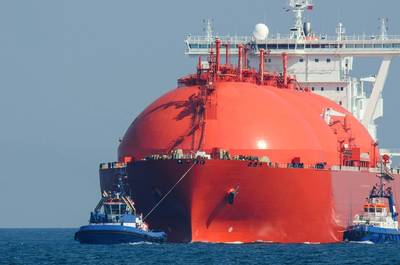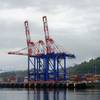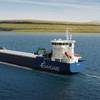Floating LNG in Asia Finds Buyers as Prices Plunge
Nine or more tankers on the way or discharged into Asia, while at least five still holding LNG off Singapore.
Several liquefied natural gas (LNG) cargoes that had been stored on vessels in Asian waters are now heading towards buyers' terminals in China, Japan or South Korea as spot prices for the super-chilled fuel have plunged this week to multi-month lows.
At least nine LNG tankers are now on their way or have already offloaded cargoes to buyers after floating off Singapore, Malaysian or South China waters for up to two months, shipping data from Refinitiv Eikon showed.
The data also shows that at least five laden LNG tankers remain in Singapore waters. Three of them have been there holding LNG in storage since the second half of October.
Storing LNG on tankers is generally seen as a riskier bet than holding crude oil on the water, given higher storage costs and the fact that LNG cargoes degrade over time by evaporating.
"When the traders started floating the cargoes, the market was in a contango of about $1, but it has now flipped into backwardation, so there is more urgency to sell the cargoes," a Singapore-based trader said.
Data intelligence company Kpler estimates that of 18 LNG tankers it flagged as floating storage in the Asia-Pacific region last week, 13 are still floating gas, based on speed, days since loading, and lack of destination and diversions.
A contango is a market structure in which prices for cargoes loading in the current month are lower than those loading in forward months. A backwardated structure is the opposite.
Spot LNG prices in Asia <LNG-AS> are currently trading below $9 per million British thermal units (mmBtu) and could be as low as $8.50 per mmBtu for cargoes being delivered to North Asia, two Singapore-based traders said.
Spot LNG prices for Asia in Eikon are usually updated weekly on Fridays.
The prices given by the traders this week would be the lowest in nearly seven months, and about 15 percent cheaper than last year at the same time, Reuters data showed.
"These are not even the distressed cargoes ... Those will likely be sold at lower prices," one of the two traders said.
A warmer-than-average winter has meant that on-shore natural gas storage levels have been high in top importing countries in Asia, including China, Japan and South Korea.
Chinese companies also purchased their winter requirements earlier this year, helping to spread out their spot purchases.
The availability of some of the tankers after discharge has helped to ease LNG tanker rates.
Still, the market remains well supplied, with at least two LNG tankers from Europe that were headed to Asia diverting to other destinations, data from Kpler and Refinitiv Eikon showed.
Reporting by Jessica Jaganathan













